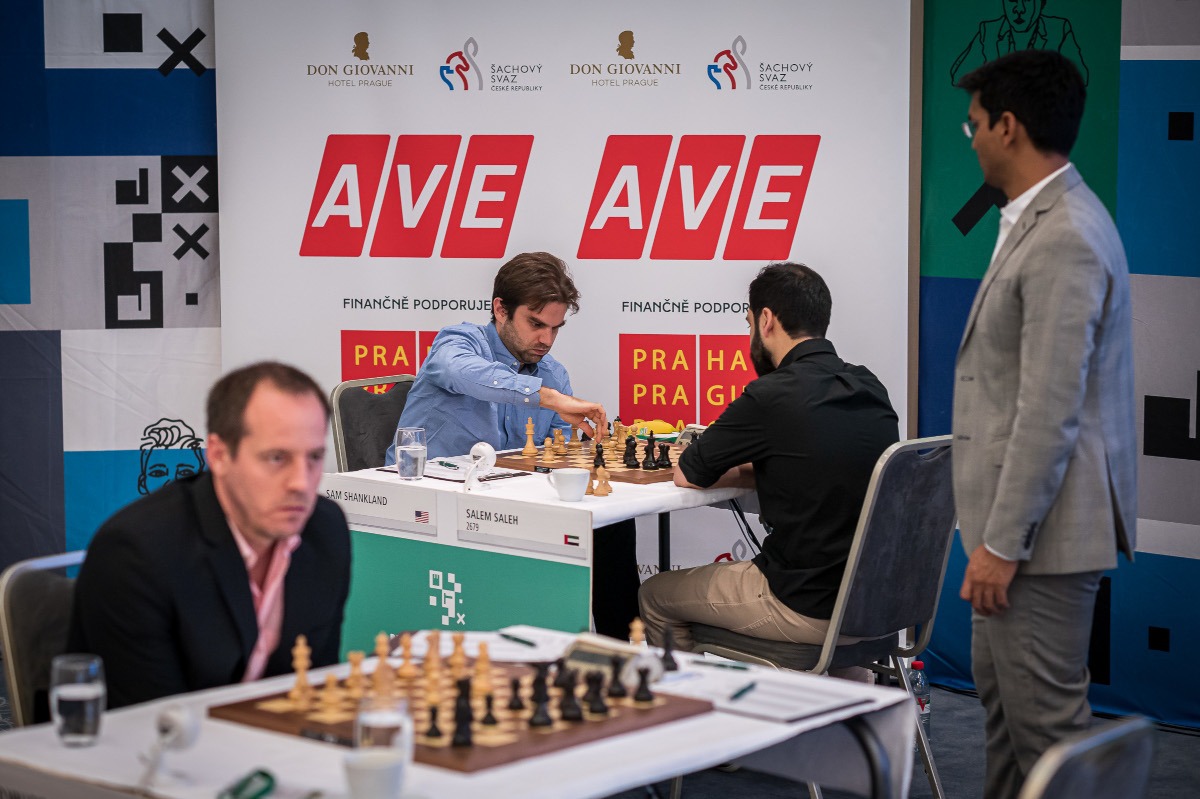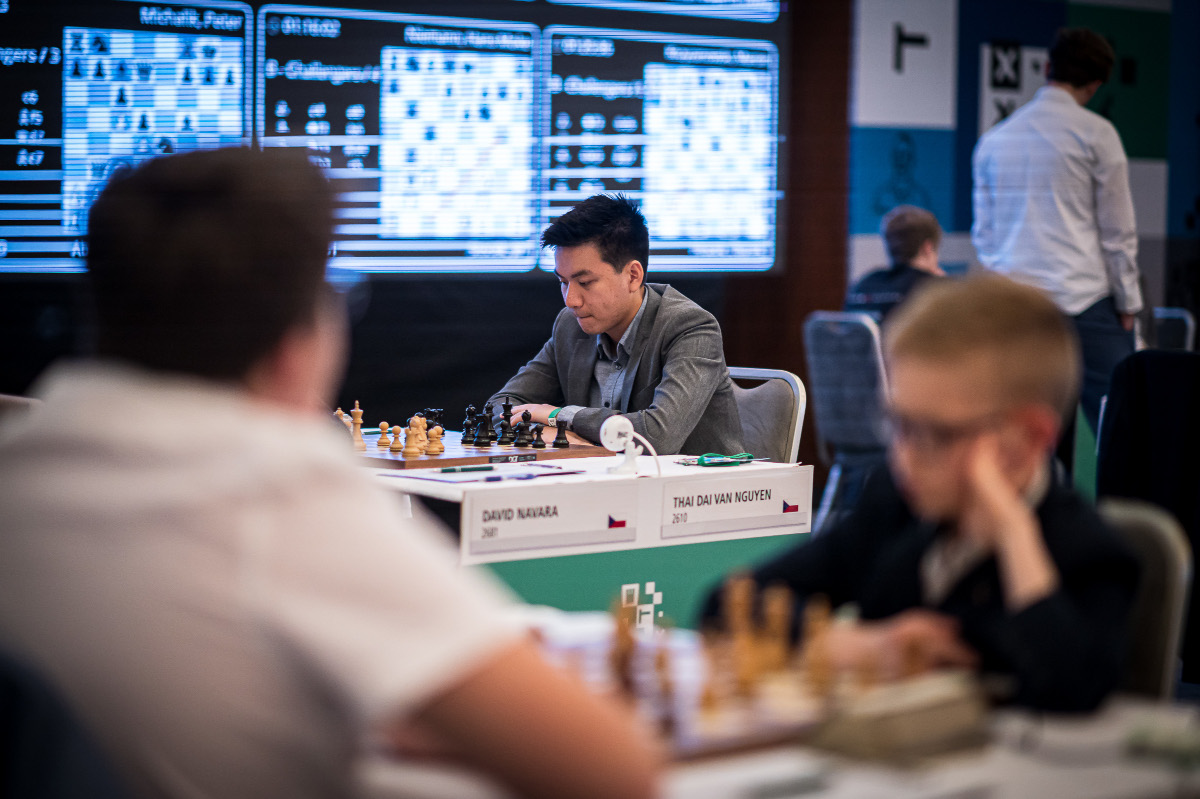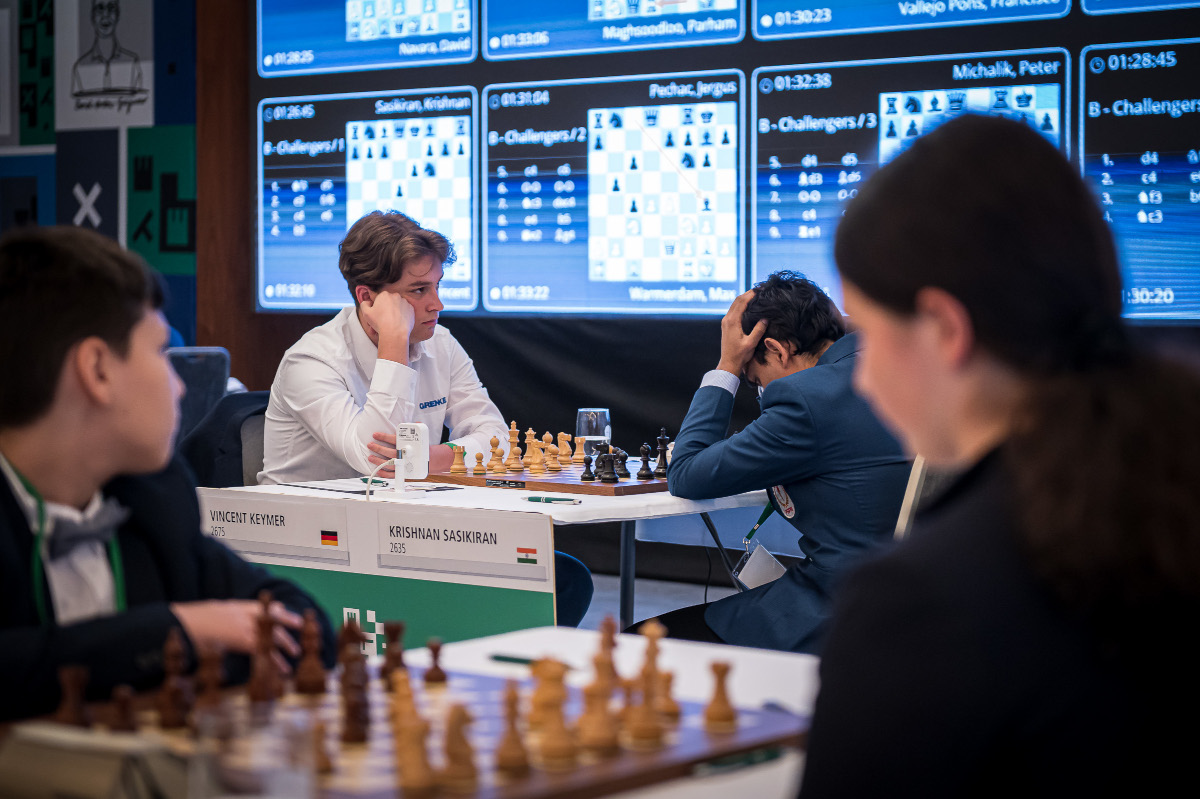


Round-1 winners Le Quang Liem, Pentala Harikrishna and David Navara kept the shared lead at the Masters section of the Prague Chess Festival, as only Sam Shankland — who had lost his game on Wednesday — scored a full point in the second round. The US grandmaster beat Saleh Salem with the white pieces to return to a fifty-percent score.
In a position with opposite-coloured bishops, Shankland kept looking for chances to make the most of a slight structural advantage. His opponent eventually faltered, and the defending champion quickly grabbed his chance.
Salem left his central pawn en prise by playing 47...Bb6, activating his pieces along the dark squares. Shankland grabbed the loose pawn with 48.Qxe5, and proficiently dealt with his opponent’s threats in the ensuing struggle.
Six moves later, the former US champion was already in the driver’s seat, as he found a nice tactical shot in 54.Rd6
Trading rooks with 54...Rxd6 55.Qxd6 is bad for Black, since White is attacking both the bishop and the pawn on b4 — defending the pawn with 55...Ba5 is clearly awkward, while losing the pawn will leave White with two strong connected passers on the queenside.
Salem found a better alternative, albeit insufficient, in 54...Rxf3. Gaining the exchange with 56.Kxf3 was winning, but required White to calculate how to escape Black’s activity starting with 56...Qh1+.
Shankland found a more elegant solution in 55.Rxb6, having foreseen that the scary-looking 55...Qe4 is not an effective defensive recourse for Black.
56.Kh2 Qf5 (56...Rd3 is better) 57.Qd4+, and White takes the initiative while also defending the crucial weakness on f2. Shankland continued playing accurately until securing the victory a few moves later.

Pentala Harikrishna taking a look at Sam Shankland’s game
Our in-house endgame expert found two interesting positions to analyse from the first round of the Masters tournament. In the game between Thai Dai Van Nguyen and Parham Maghsoodloo, Black failed to find the right way to break the cage set up by his opponent and convert his superior position with a far-advanced passed pawn on the queenside.ç
After 45...g5, Nguyen managed to salvage a half point after finding the critical 46.h4. As GM Müller proves in his analysis, 45...Bf8 was winning for Black.
Analysis of the instructive endgame seen in David Navara vs David Anton is also included in the replayer below.

Thai Dai Van Nguyen
German talent Vincent Keymer is the second seed in the Challengers tournament. The youngster got two whites in his first games and made the most of his chances, as he is now leading the standings table with a perfect score.
Keymer‘s opponent in round 2, Krishnan Sasikiran, faltered in a rather tricky position.
Sasikiran either misjudged the evaluation or failed to calculate precisely here, as his 34...Re8 only created problems for him in the ensuing complications, when simplifying with 34...Qxf3+ would have kept the balance in the position — 35.Kxf3 Re8 36.Rc1 fxg3 37.fxg3 Bb4 38.Rd1 is one of the potential lines in which Black has enough counterplay for the pawn.
Instead, after the text, Keymer got the upper hand, as he gained another pawn and decisively activated his pieces. This is how the position looked six moves later.
Black played 40...Kh8, and resigned.

Relaxed in the opening phase — sole leader Vincent Keymer
| Advertising |